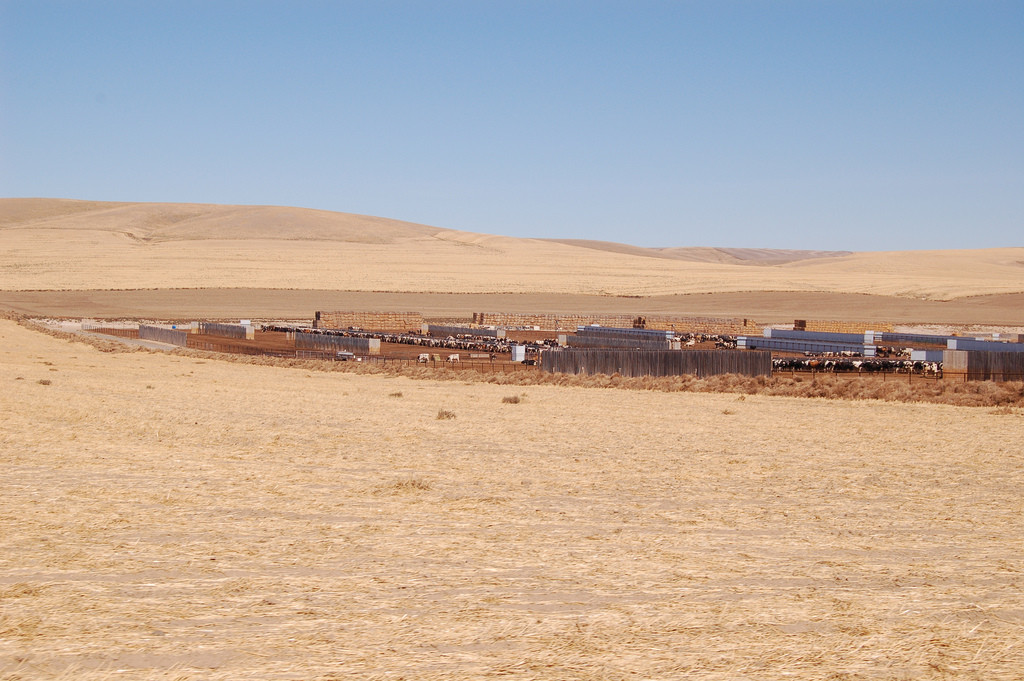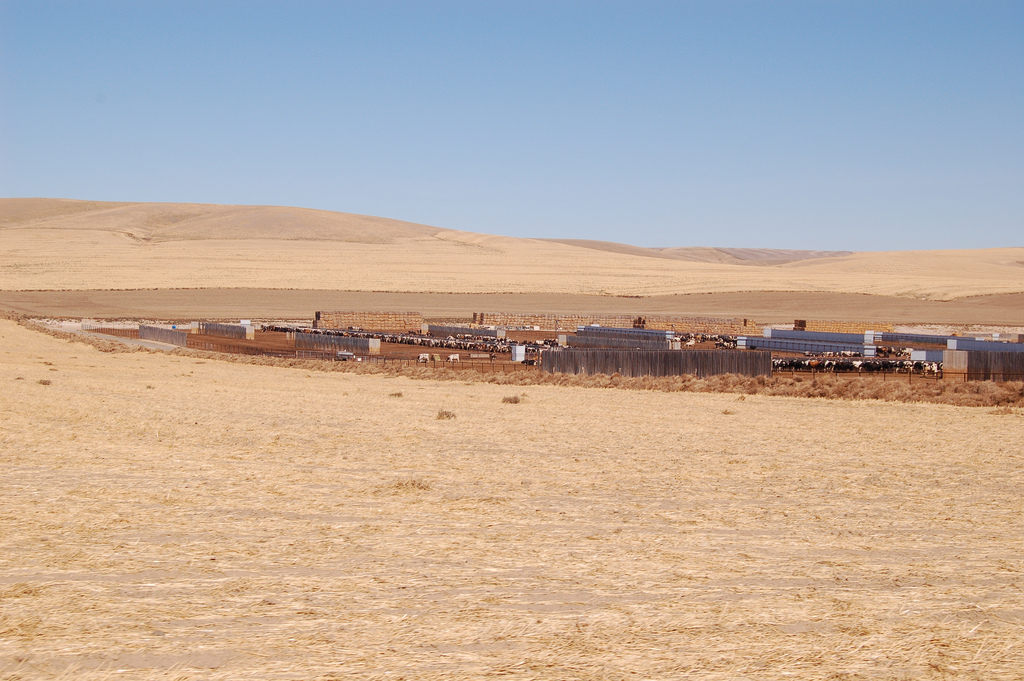
Factory farms put an incredible strain on earth’s natural resources. While originally built for maximum efficiency, factory farms actually yield relatively small amounts of meat, dairy and eggs given the staggering price the environment pays.
The demand for livestock pasture is a major driver of deforestation. Globally, deforestation for animal grazing and feed crops is estimated to emit 2.4 billion tons of carbon dioxide annually. The UN estimates that 70% of land formerly supporting Amazon rainforests has been turned into pastures.
During digestion, ruminants like cattle, sheep, and goats emit methane, a greenhouse gas with more than 20 times the global warming potential of carbon dioxide. Factory farming accounts for 37% of all methane emissions.
In the United States, factory-farmed animals generate more than one million tons of manure each day – three times the amount of raw waste generated by the country’s human population. The waste generated by factory farms is typically funneled into huge, open-air lagoons – some as big as several football fields. These cesspools are prone to leaks and spills, which regularly contaminate water supplies.
In order to prevent the spread of disease and to promote faster growth, confined animals are fed a number of antibiotics, much of which end up undigested in their waste products. The antibiotics can contaminate crops and waterways. This overuse of antibiotics can promote the prevalence of antibiotic-resistant bacteria in the food supply and ultimately cause resistant infections in humans.
We will explore the human health side of factory farming in more detail tomorrow.
**********
.
Web Links
Factory Farming and the Environment
Photo, posted September 27, 2006, courtesy of Friends of Family Farmers via Flickr.
.
Earth Wise is a production of WAMC Northeast Public Radio.

Really enjoy these segments.